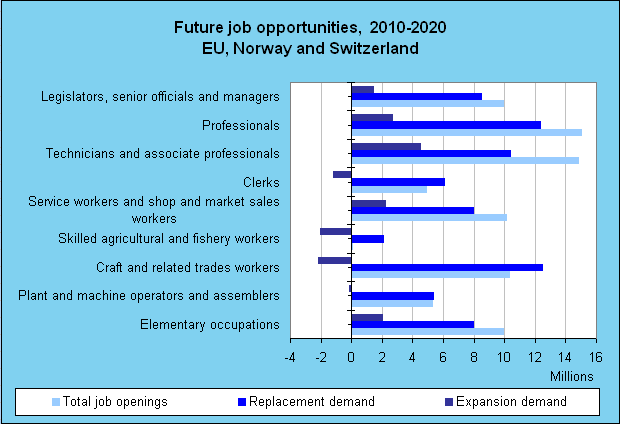Developing people’s skills throughout the lifecycle and achieving a better match between labour supply and demand are among the main points of the initiative (Communication from the Commission: Europe 2020, 3 March 2010), which also stresses the importance of anticipating and managing changes on the labour market.
Cedefop’s latest medium term forecast for the demand and supply of skills in Europe includes forecasts on the number of job openings by 2020 (see chart).
The number of total job openings is calculated by adding replacement demand – i.e. replacing workers who retire or change jobs - and expansion demand, which represents a net creation of new jobs.
Source: Cedefop (IER estimates based on E3ME, EDMOD and RDMOD).
Key points
- In the EU, Norway and Switzerland, some 80 million job openings will be generated by 2020. Of those, around 73 million will be to replace workers who retire or change job. 7 million will be due to the creation of new jobs.
- Most new jobs will be created in knowledge-intensive and skill-intensive occupations. The biggest increases in employment levels will be registered in high-level managerial and technical jobs: legislators, senior officials and managers (net creation of +1.4 million jobs), professionals (+2.7 million) and technicians and associate professionals (+4.5 million).
- Although the number of craft and related trade workers will drop overall (-2.1 million jobs), the number of forecasted job openings in this category is high (around 10.3 million). This is to replace a large part of those workers that will retire or change job.
The indicator and its components are broken down by occupation (ISCO classification). Data refer to an aggregate of the European Union, Norway and Switzerland. Results of the forecast are also available by country, level of education and economic sector.
For more detailed information (primary sources, methodology and results), please refer to the Cedefop publication, "Skills supply and demand in Europe: medium-term forecast up to 2020"

